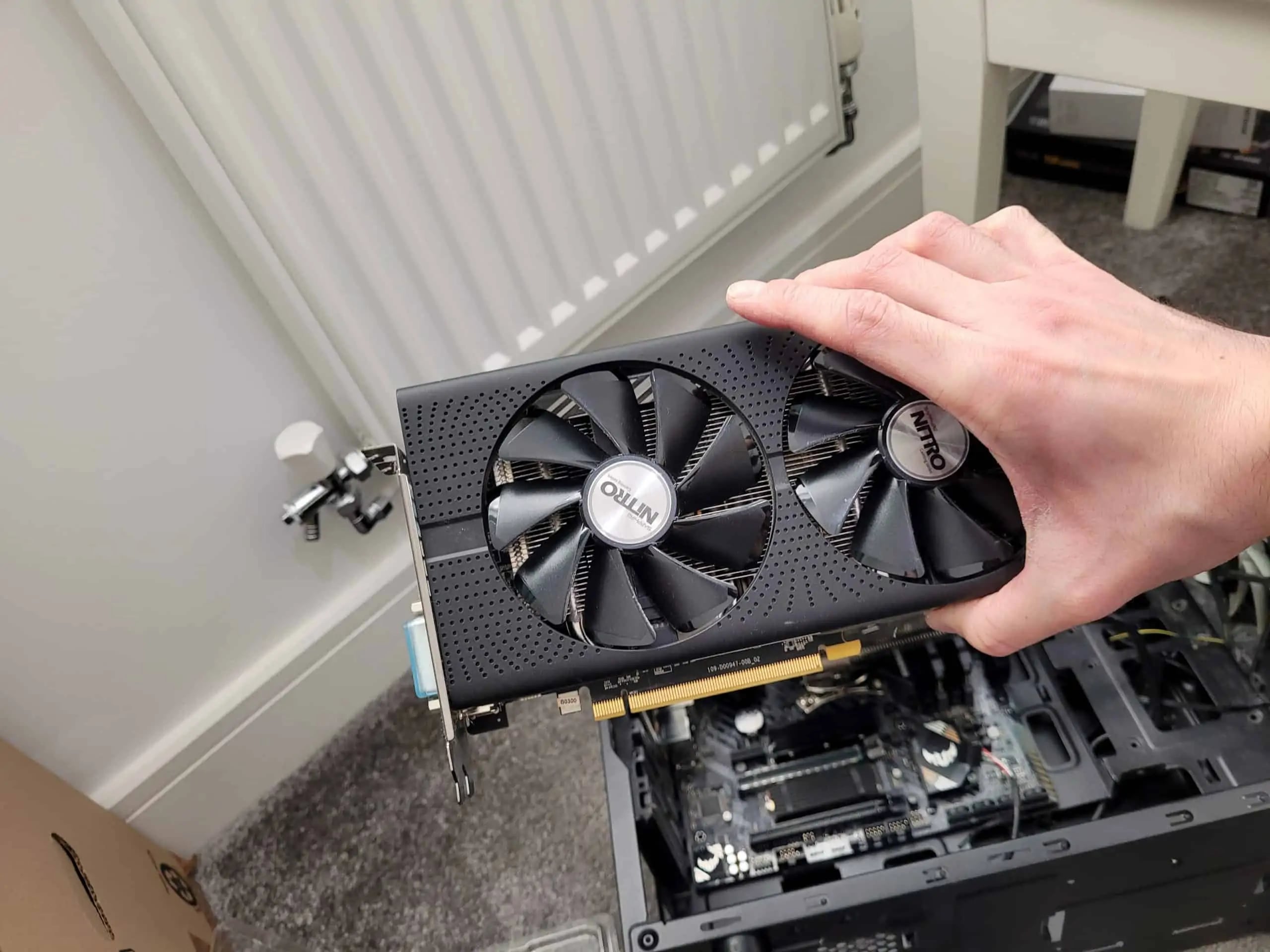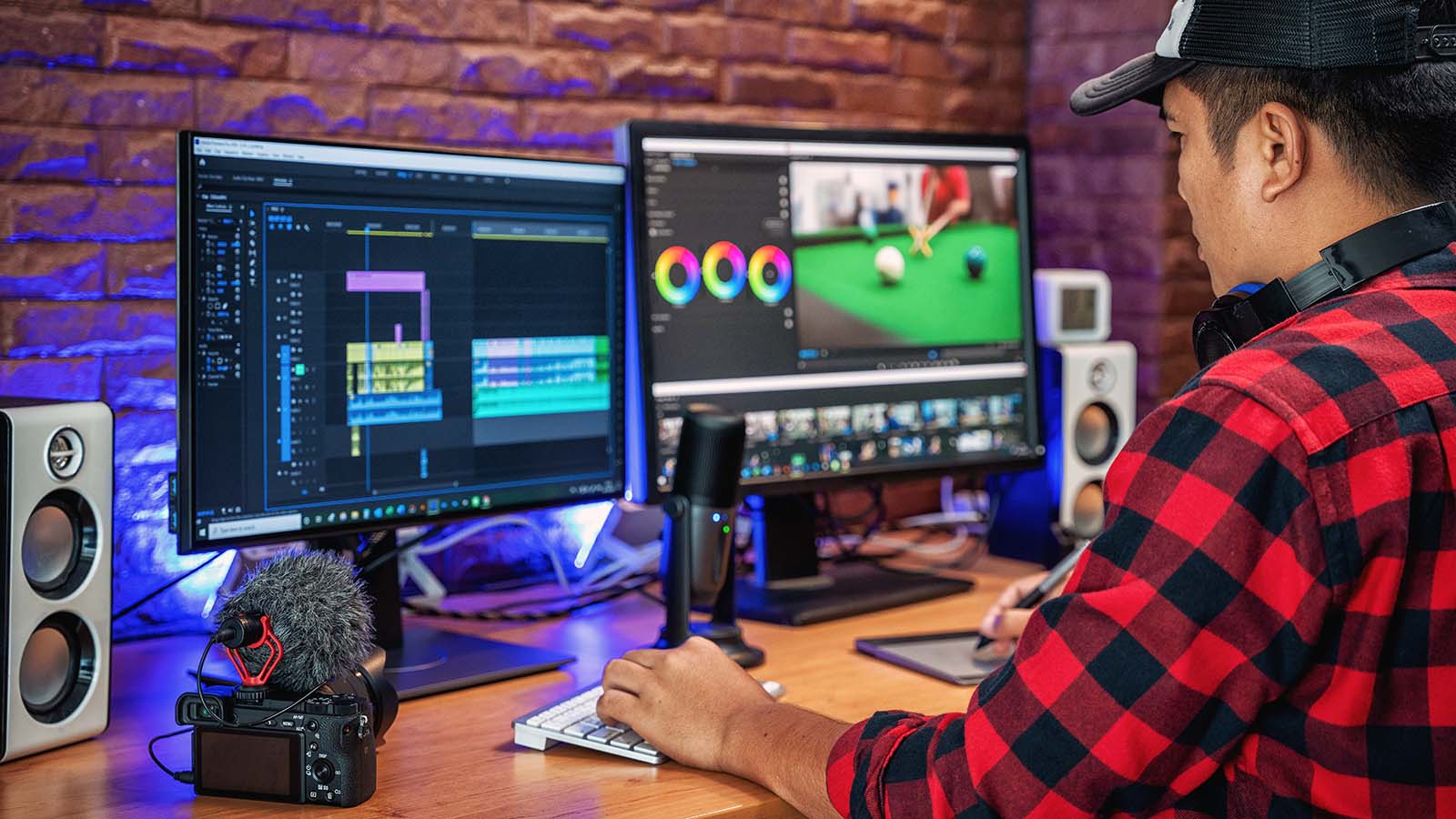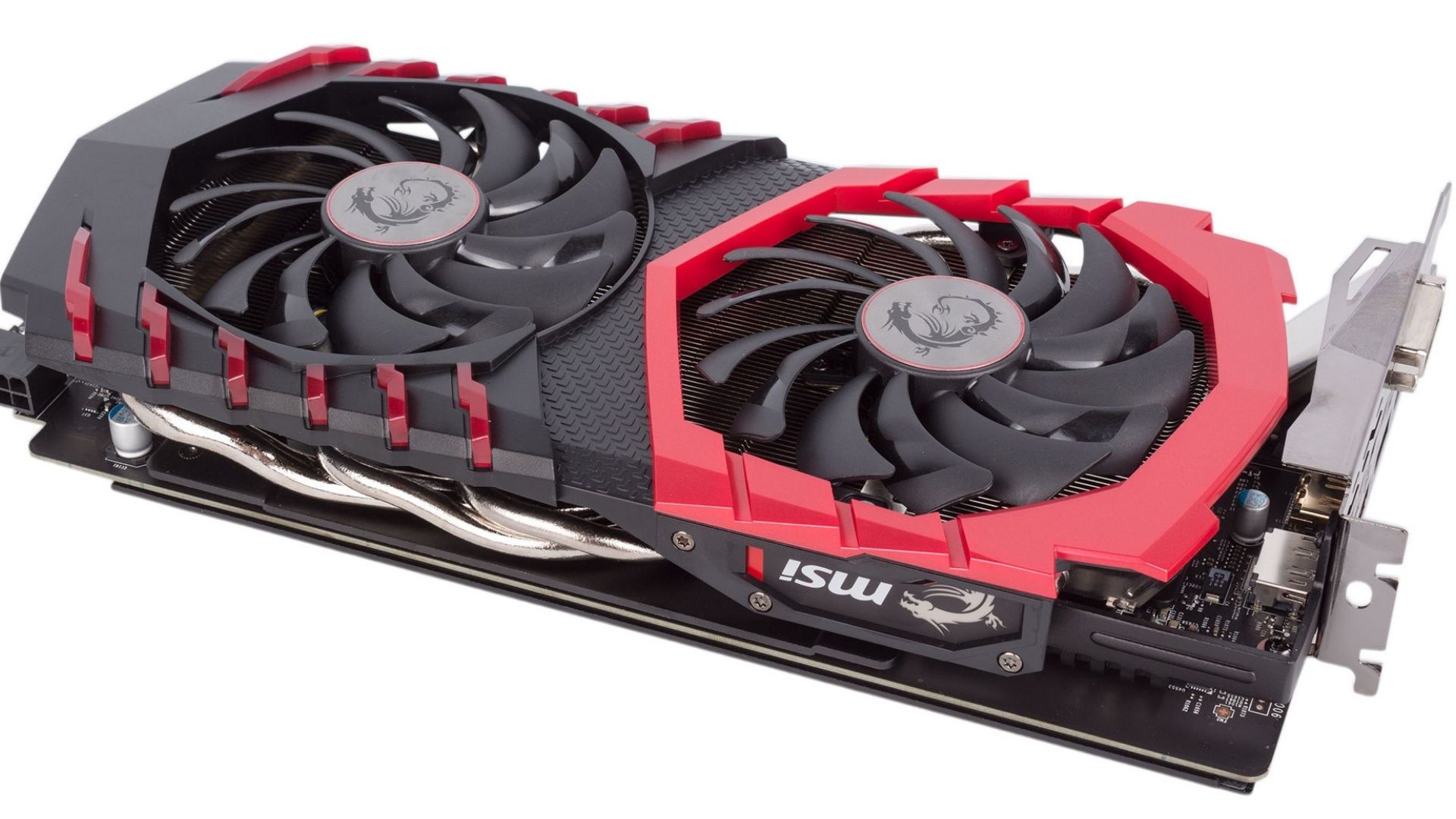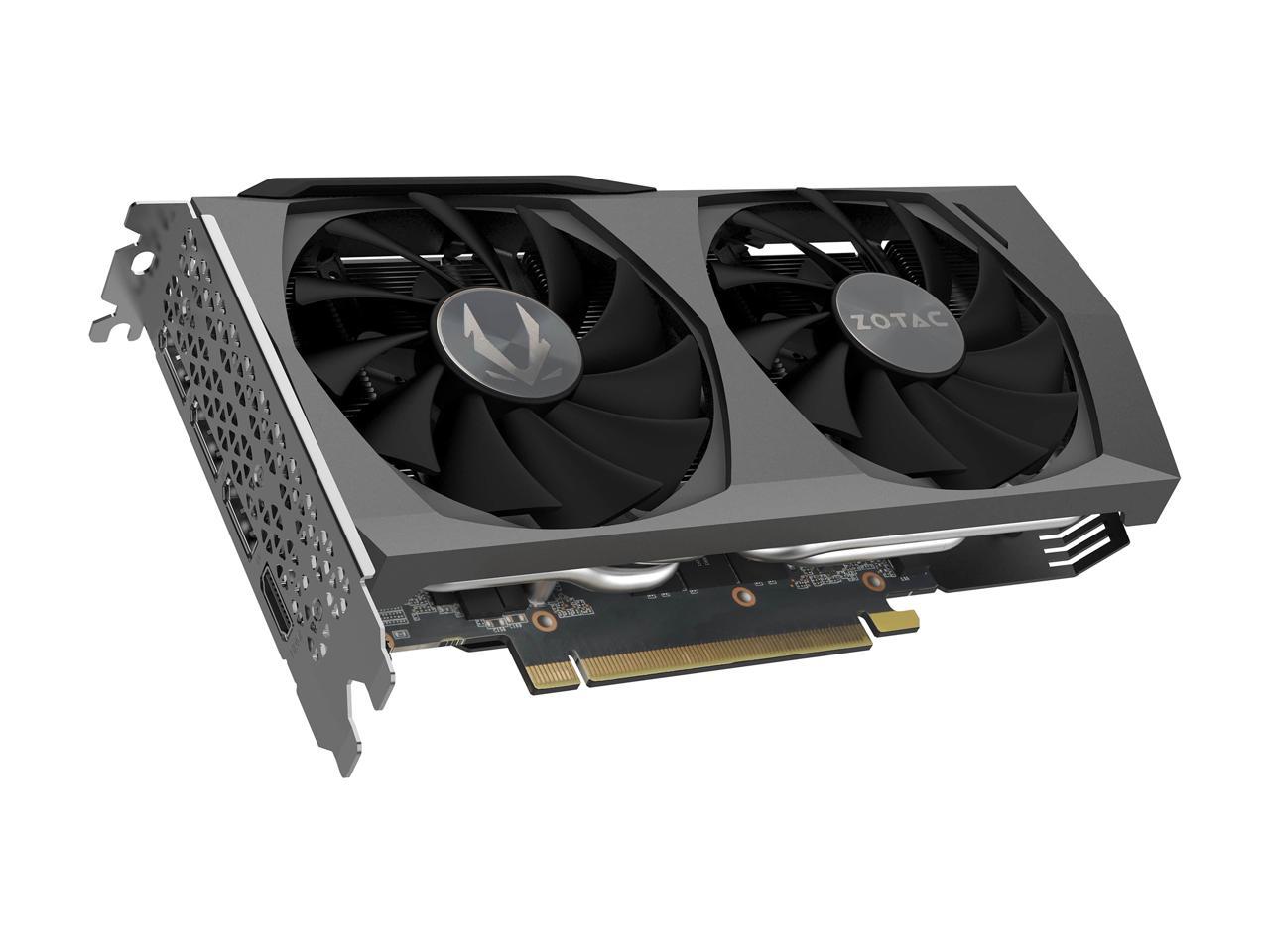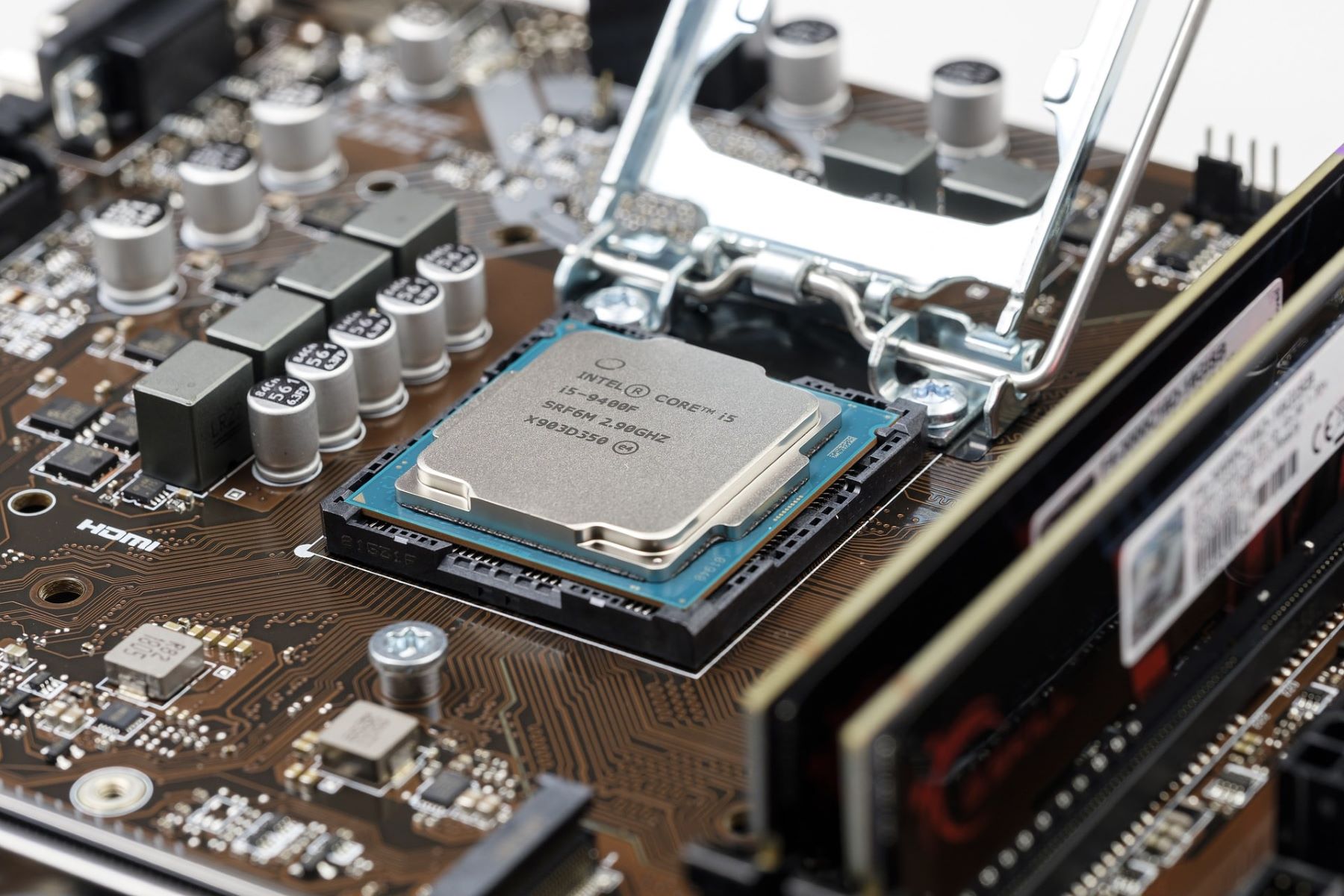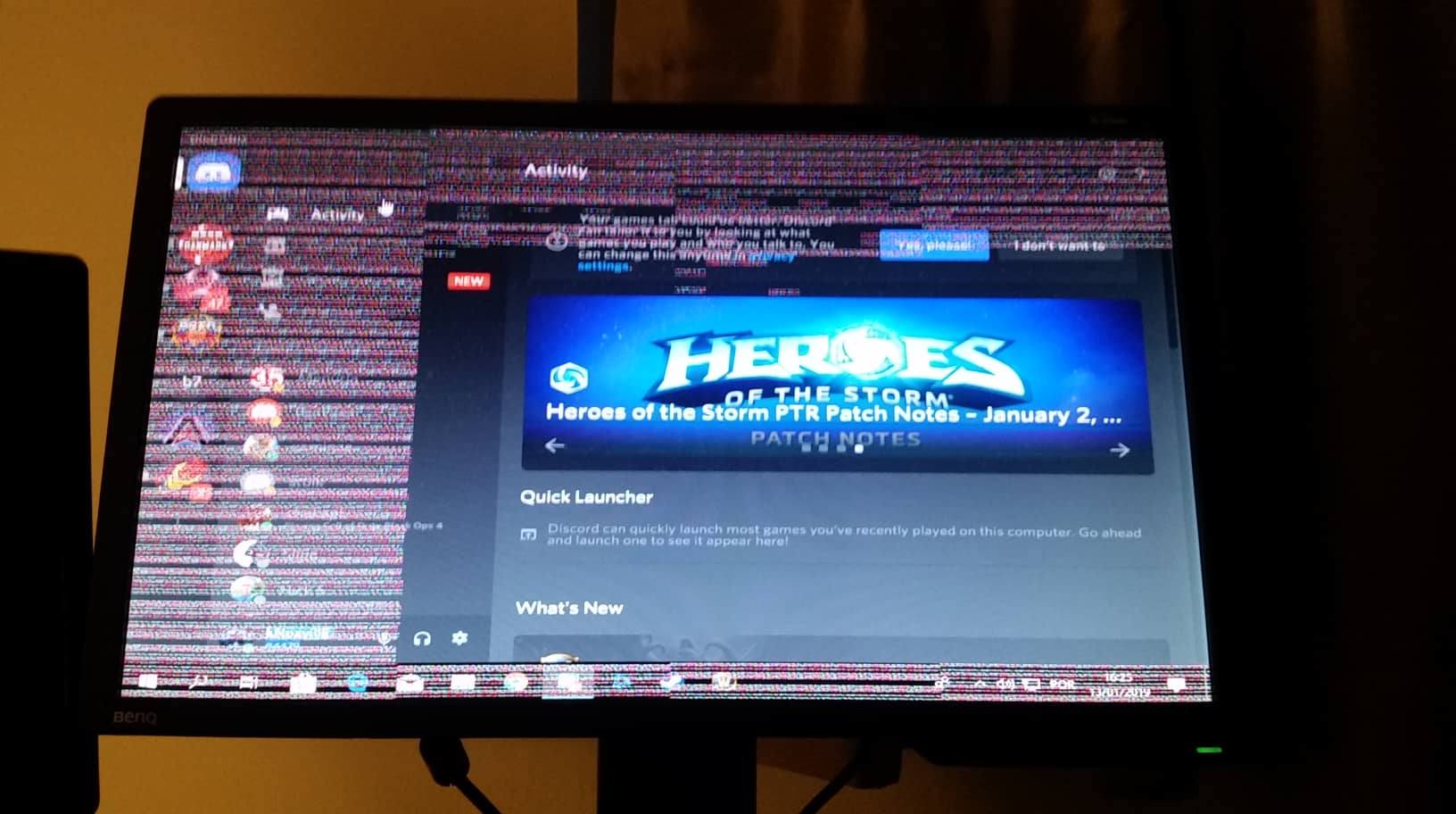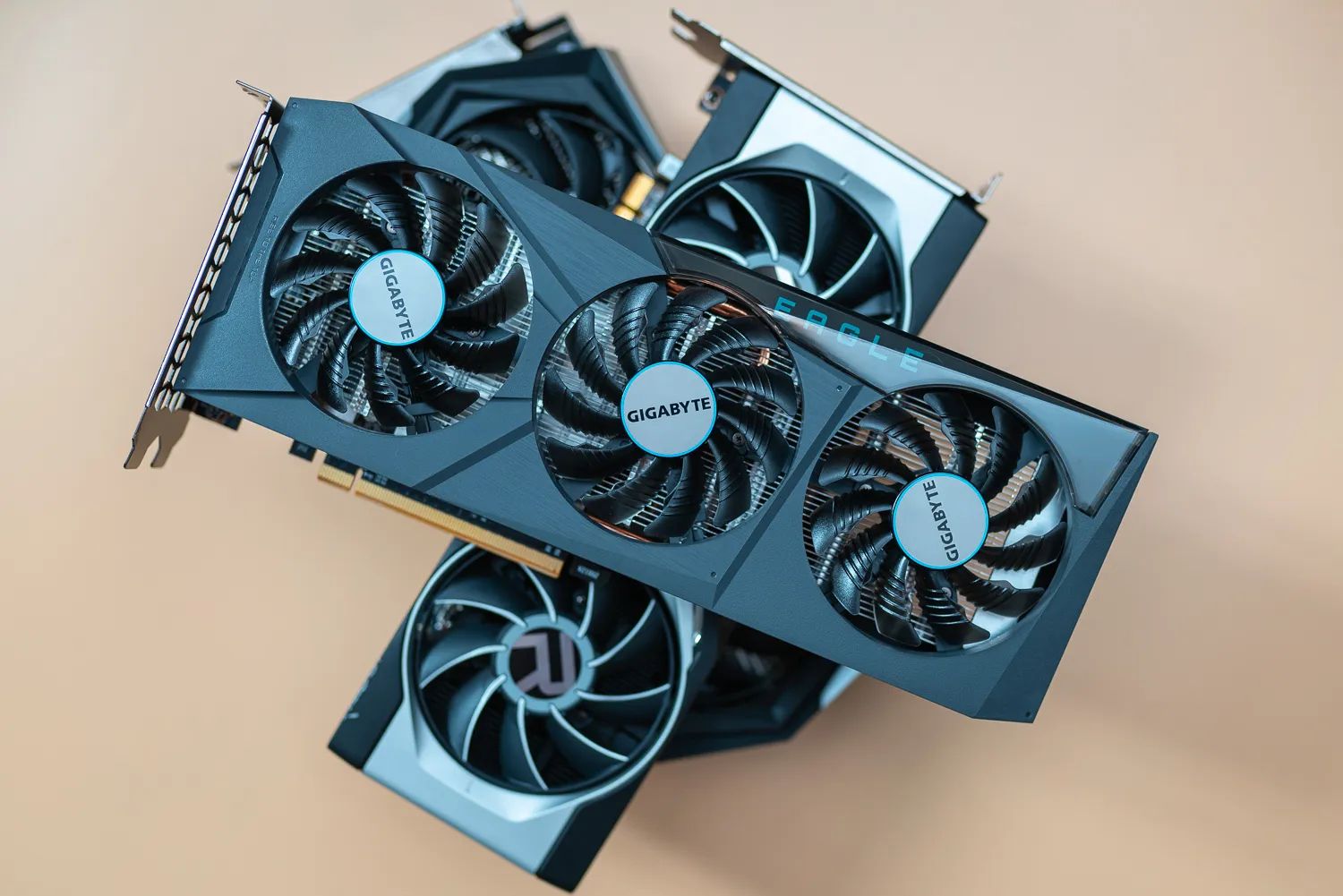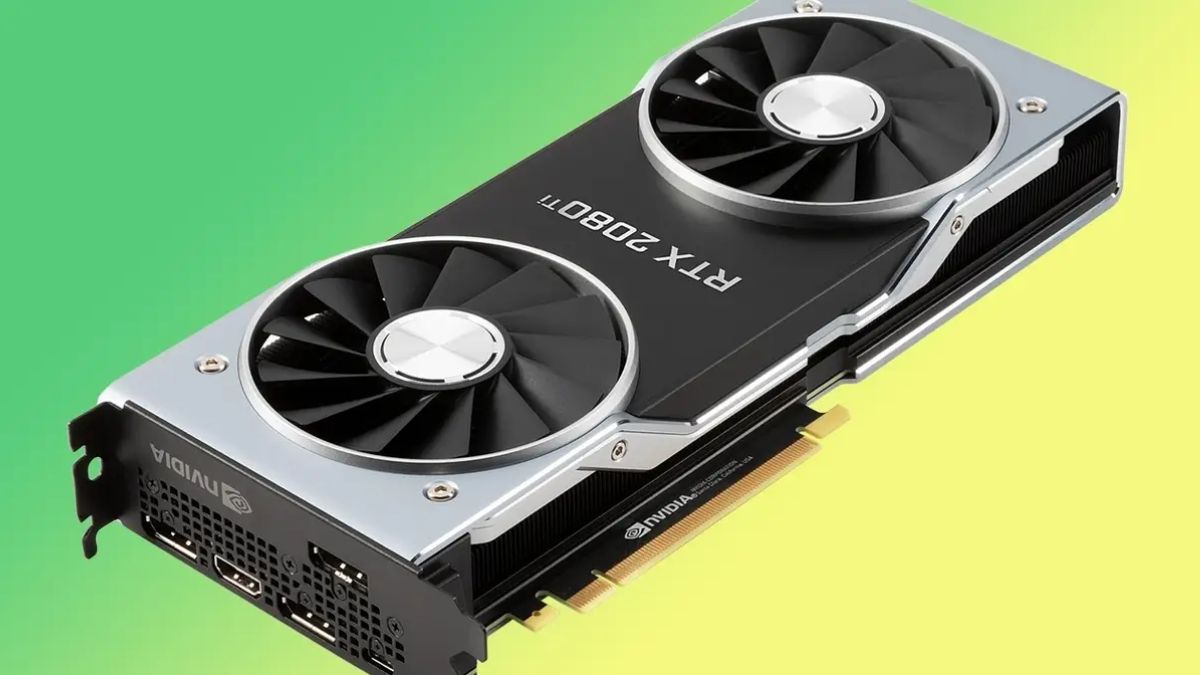Introduction
The graphics card is an essential component of a computer system that handles the rendering and processing of visual data. Whether you’re a gamer, a content creator, or simply an everyday computer user, a well-functioning graphics card is crucial for smooth and efficient performance.
However, one common issue that many users face with their graphics card is overheating. When a graphics card overheats, it can lead to performance degradation, system crashes, and even hardware damage. Therefore, it’s important to understand the signs of graphics card overheating, the causes behind it, and how to prevent it.
In this article, we’ll explore the various aspects of graphics card overheating and provide practical tips on how to keep your graphics card cool and running optimally.
Signs of Graphics Card Overheating
Before we delve into the causes and prevention methods, it’s crucial to recognize the signs of graphics card overheating. Some common indicators that your graphics card may be overheating include:
- System crashes or freezes during intense graphic-intensive tasks
- Artifacts or graphical glitches appear on the screen
- Fan noise becomes excessively loud or irregular
- Sudden drop in performance during gaming or graphics-intensive applications
- Computer shuts down unexpectedly or experiences a blue screen of death (BSOD)
If you notice any of these symptoms, it’s important to take immediate action to prevent further damage to your graphics card and overall system stability.
Signs of Graphics Card Overheating
Graphics card overheating can cause various issues that affect the performance and stability of your computer. By being aware of the signs, you can take prompt action to prevent further damage. Here are some common indicators of graphics card overheating:
- System crashes or freezes during intense graphic-intensive tasks: If your computer crashes or freezes when you’re playing games or running applications that require a lot of graphics processing power, it could be a sign of your graphics card overheating. The excessive heat can cause instability and lead to system crashes.
- Artifacts or graphical glitches appear on the screen: Overheating can cause graphic artifacts or glitches to appear on your screen. These may manifest as flickering, random color patterns, or distorted images. If you notice any unusual visual abnormalities, it’s likely a result of the increased temperatures affecting the performance of your graphics card.
- Fan noise becomes excessively loud or irregular: Your graphics card is equipped with cooling fans to dissipate heat. If these fans are working harder than usual to keep the temperatures down, you may notice an increase in fan noise. Excessive or irregular fan noise can indicate that your graphics card is struggling to cool itself properly.
- Sudden drop in performance during gaming or graphics-intensive applications: If you experience a noticeable decline in performance while playing games or running graphics-intensive applications, it could be a result of your graphics card overheating. High temperatures can cause the GPU to throttle down its performance to prevent damage, resulting in decreased frame rates and overall sluggishness.
- Computer shuts down unexpectedly or experiences a blue screen of death (BSOD): When a graphics card overheats to a critical level, it can trigger your computer to shut down abruptly as a safety measure. In some cases, you may encounter a blue screen of death (BSOD), indicating a system crash. These scenarios are clear indications of severe overheating that need immediate attention.
If you notice any of these signs, it’s essential to take appropriate measures to address the issue and prevent further damage to your graphics card. In the next section, we will explore the common causes of graphics card overheating and discuss preventive measures to keep your graphics card running at optimal temperatures.
Causes of Graphics Card Overheating
Understanding the causes of graphics card overheating is crucial for effectively preventing and addressing the issue. There are several factors that can contribute to increased temperatures in your graphics card:
- Inadequate cooling: Insufficient airflow within your computer case can impede the cooling of your graphics card. If the fans and heat sinks are clogged with dust or the computer case lacks proper ventilation, heat can accumulate around the graphics card, leading to overheating.
- High ambient temperature: The temperature of the surrounding environment can impact the overall temperature of your graphics card. If you live in a hot climate or operate your computer in a poorly ventilated area, the increased ambient temperature can exacerbate the overheating issue.
- Overclocking: Overclocking your graphics card involves increasing its clock speed and power output to achieve better performance. However, this also produces more heat. If your graphics card is overclocked without adequate cooling measures, it can quickly reach high temperatures and overheat.
- Faulty cooling system: In some cases, the cooling system of the graphics card itself may be defective or malfunctioning. This can include issues with the fans, heat pipes, or thermal paste. A faulty cooling system will fail to dissipate heat effectively, leading to increased temperatures.
- Outdated drivers: Graphics card drivers play a crucial role in maintaining optimal performance and temperature management. Outdated or incompatible drivers can cause the graphics card to work harder than necessary, resulting in increased heat generation.
It’s important to identify the specific cause or combination of causes that are contributing to the overheating problem with your graphics card. Once you understand the underlying factors, you can take appropriate steps to prevent overheating and ensure the longevity and optimal performance of your graphics card.
How to Prevent Graphics Card Overheating
Preventing graphics card overheating is essential to maintain its performance, longevity, and overall system stability. By implementing the following measures, you can effectively keep your graphics card temperatures in check:
- Clean Your Graphics Card: Regularly clean your graphics card to remove dust and debris that can obstruct the fans and heat sinks. Use compressed air or a soft brush to gently clean the surface and ensure optimal airflow.
- Improve Airflow in Your Computer Case: Ensure that your computer case is properly ventilated by positioning it in a well-ventilated area and keeping its vents unobstructed. Consider installing additional case fans or using a liquid cooling system for better airflow.
- Use a Graphics Card Cooling System: Consider using an aftermarket graphics card cooling system, such as a GPU cooler or a custom cooling solution. These can provide additional cooling capacity and help dissipate heat more effectively.
- Update Graphics Card Drivers: Regularly update your graphics card drivers to ensure compatibility, stability, and optimal performance. Manufacturers often release driver updates that include temperature management improvements.
- Monitor Graphics Card Temperatures: Utilize software tools that allow you to monitor the temperature of your graphics card in real-time. Keeping an eye on temperatures will help you identify any abnormalities and take necessary actions in a timely manner.
- Avoid Overclocking the Graphics Card: While overclocking can boost performance, it also leads to increased heat generation. If you’re experiencing overheating issues, consider reverting the graphics card to its default clock settings or adjusting the overclocking parameters with adequate cooling in place.
Implementing these preventive measures will not only keep your graphics card cool and functioning optimally, but it will also enhance the overall stability and lifespan of your computer. Remember, a well-maintained graphics card will not only improve your gaming or multimedia experience but also prevent unnecessary hardware damage and frustrating system crashes.
Clean Your Graphics Card
Regularly cleaning your graphics card is an essential step in preventing overheating and maintaining its optimal performance. Over time, dust, debris, and pet hair can accumulate on the fans and heat sinks of your graphics card, obstructing airflow and causing temperatures to rise. Here’s how you can effectively clean your graphics card:
- Gather the necessary tools: Before you begin cleaning your graphics card, make sure you have a can of compressed air, a soft brush, and a lint-free cloth. These tools will help you remove the dust and debris without causing any damage to the delicate components.
- Power down and unplug your computer: To ensure your safety and prevent any potential damage, shut down your computer and unplug it from the power source. This will eliminate the risk of electric shock and protect your hardware during the cleaning process.
- Open your computer case: Depending on your computer case design, you may need to remove a side panel or use specific screws to access the internal components. Refer to your computer’s manual or online resources for guidance on how to safely open your case.
- Locate the graphics card: Once your computer case is open, locate the graphics card. It will be inserted into a slot on the motherboard and connected to the display ports on the back of your computer. Take note of any screws or clips holding it in place.
- Clean the fans and heat sinks: Use a can of compressed air to blow away the dust and debris from the fans and heat sinks. Ensure you hold the can upright and use short bursts to avoid excess moisture and pressure. Use the soft brush to gently remove any stubborn dust particles.
- Wipe the exterior: Use a lint-free cloth slightly dampened with water or isopropyl alcohol to wipe the exterior of the graphics card. This will remove any smudges or fingerprints and help restore its appearance.
- Reassemble your computer: Once you’ve cleaned the graphics card, carefully reinsert it into the slot and securely fasten any screws or clips. Close the computer case and reconnect all cables.
- Power on your computer: After cleaning your graphics card and reassembling your computer, power it on and monitor the temperatures to ensure that the cleaning process has effectively improved heat dissipation.
Remember to clean your graphics card regularly, depending on your computer’s environment. Aim to clean it every few months or more frequently if you have pets or operate your computer in a dusty environment. By keeping your graphics card clean, you’ll optimize its cooling capabilities and reduce the risk of overheating.
Improve Airflow in Your Computer Case
Proper airflow within your computer case is crucial for maintaining optimal temperatures and preventing graphics card overheating. When the airflow is obstructed, heat can accumulate around the components, including the graphics card, leading to increased temperatures. Here are some steps you can take to improve the airflow in your computer case:
- Keep your computer in a well-ventilated area: Position your computer in a location with adequate airflow. Avoid placing it in an enclosed space or against a wall, as this can restrict the ventilation and trap heat.
- Clear obstructions around the computer case: Ensure that there is ample space around the computer case for airflow. Remove any objects, furniture, or clutter that may block the air intake or exhaust vents of the case.
- Clean the computer case vents: Over time, dust can accumulate on the vents of your computer case, hindering the airflow. Use a can of compressed air or a soft brush to gently clean the vents, removing any obstructions that restrict the airflow.
- Install additional case fans: If your computer case has available fan slots, consider installing additional case fans to improve the airflow. Place them strategically to create a balanced airflow pattern, with intake fans at the front and bottom, and exhaust fans at the rear and top of the case.
- Manage cables effectively: Disorganized cables inside the computer case can restrict airflow and trap heat. Use cable management techniques, such as zip ties or cable sleeves, to keep the cables neatly organized and away from the fans and components.
- Consider liquid cooling solutions: Liquid cooling systems, such as all-in-one (AIO) liquid coolers or custom water cooling setups, can provide superior heat dissipation compared to traditional air cooling. Liquid cooling transfers heat away from the CPU and graphics card more effectively, reducing the overall temperature inside the case.
- Monitor and adjust fan speeds: Use software utilities or BIOS settings to monitor and adjust the fan speeds in your computer case. Set the fan speeds to a level that provides adequate cooling while maintaining a reasonable noise level.
By implementing these steps, you’ll enhance the airflow within your computer case, allowing for effective heat dissipation and significantly reducing the risk of graphics card overheating. Remember to periodically check the airflow and clean the vents to maintain proper cooling performance.
Use a Graphics Card Cooling System
Using a dedicated cooling system for your graphics card can be an effective solution to prevent overheating and maintain optimal temperatures. These cooling systems provide enhanced cooling capacity and can help dissipate heat more efficiently. Here are some options to consider:
- Aftermarket GPU coolers: Aftermarket GPU coolers are specially designed cooling solutions that replace the stock cooler on your graphics card. These coolers typically feature larger heat sinks, more powerful fans, and improved heat pipe designs, resulting in better heat dissipation and lower temperatures.
- Graphics card liquid cooling kits: Graphics card liquid cooling kits, or GPU water blocks, use a liquid coolant to transfer heat away from the graphics card’s components. These kits consist of a water block that is installed on the graphics card and connected to a liquid cooling loop. Liquid cooling provides efficient cooling, especially for high-end graphics cards and intensive gaming applications.
- Custom water cooling: For advanced users and enthusiasts, custom water cooling setups offer the highest level of cooling performance. These custom loops involve assembling a series of water blocks, radiators, pumps, and tubing to cool the CPU, graphics card, and other components. Custom water cooling provides excellent cooling and allows for extreme overclocking, ensuring that the graphics card remains at optimal temperatures even under heavy loads.
Before choosing a graphics card cooling system, make sure to check compatibility with your specific graphics card model. Additionally, consider your level of technical expertise and budget when evaluating these options.
Installing a graphics card cooling system can be more complex than other solutions, so it’s important to follow the manufacturer’s instructions carefully. If you’re not comfortable with installing the cooling system yourself, consider seeking professional assistance to ensure proper installation and avoid any potential damage to your graphics card.
By utilizing a dedicated graphics card cooling system, you can significantly improve heat dissipation and reduce the risk of overheating. This, in turn, will lead to better performance, stability, and longevity of your graphics card.
Update Graphics Card Drivers
Keeping your graphics card drivers up to date is an essential step in preventing overheating and ensuring optimal performance. Graphics card manufacturers regularly release driver updates that include bug fixes, performance improvements, and temperature management enhancements. Here’s why updating your graphics card drivers is important and how to do it:
Benefits of Updating Graphics Card Drivers
Updating your graphics card drivers offers several benefits, including:
- Bug fixes: Driver updates often address known issues and bugs that can affect the stability and performance of your graphics card. By installing the latest drivers, you can resolve potential software conflicts that may contribute to overheating.
- Performance improvements: Graphics card driver updates often include optimizations and performance enhancements that can improve the efficiency and speed of your graphics card. This can result in reduced heat generation and better overall performance.
- Temperature management: Manufacturers may introduce temperature management features in driver updates to help keep your graphics card cool. These updates can include improvements to fan speed control, power management, and thermal monitoring, all of which contribute to better temperature regulation.
- Compatibility with new software and games: Software updates and new game releases often require the latest graphics card drivers to ensure smooth compatibility and optimal performance. By staying up to date, you’ll be ready to enjoy the latest software and games without encountering any overheating issues.
How to Update Graphics Card Drivers
Updating your graphics card drivers is a straightforward process. Here’s how to do it:
- Identify your graphics card model: Determine the make and model of your graphics card. You can find this information in the device manager of your operating system or refer to the documentation or packaging that came with your graphics card.
- Visit the manufacturer’s website: Go to the official website of your graphics card manufacturer, such as NVIDIA or AMD. Navigate to the support or drivers section of the website.
- Download the latest drivers: Locate the appropriate drivers for your graphics card model and download the latest version available. Make sure to choose the correct operating system version.
- Install the drivers: Run the downloaded driver file and follow the on-screen instructions to install the new drivers. It’s recommended to choose the custom installation option if available, as it allows you to perform a clean installation and remove any old drivers.
- Restart your computer: Once the driver installation is complete, restart your computer to ensure that the changes take effect.
By regularly updating your graphics card drivers, you’ll have access to the latest features, performance enhancements, and temperature management improvements. This will help keep your graphics card running efficiently and reduce the risk of overheating.
Monitor Graphics Card Temperatures
To effectively prevent graphics card overheating, it’s crucial to monitor the temperatures of your graphics card. By keeping an eye on the temperatures, you can identify if the card is running too hot and take appropriate actions to cool it down. Here’s why monitoring graphics card temperatures is important and how to do it:
The Importance of Monitoring Graphics Card Temperatures
Monitoring the temperatures of your graphics card provides valuable insight into its performance and helps you prevent overheating-related issues. Here’s why it’s important:
- Early detection of overheating: By monitoring temperatures, you can detect unusual increases in temperature before they become critical. This allows you to take corrective measures promptly and prevent severe damage to your graphics card.
- Optimal performance maintenance: Graphics cards operate most efficiently within a certain temperature range. By monitoring the temperatures, you can ensure that your card is staying within this optimal range, which improves overall performance and reduces the risk of throttling or performance degradation.
- Identification of cooling issues: If you notice consistently high temperatures or sudden spikes despite regular cleaning and sufficient airflow, it may indicate an underlying cooling issue that needs to be addressed. Monitoring temperatures helps you identify potential problems with fans, heat sinks, or thermal paste, allowing for timely maintenance or replacement.
How to Monitor Graphics Card Temperatures
There are various software tools available that enable you to monitor graphics card temperatures in real-time. Here’s how you can monitor temperatures effectively:
- Choose a temperature monitoring software: Download and install a reliable software tool that provides accurate temperature readings for your graphics card. Popular options include MSI Afterburner, HWMonitor, and GPU-Z. Ensure that the software supports your specific graphics card model.
- Open the monitoring software: Launch the installed software and navigate to the section that displays graphics card temperatures. It may be labeled as GPU temperature, GPU temp, or similar.
- Observe the temperatures: Monitor the temperature readings while you perform graphics-intensive tasks like gaming or running demanding applications. Take note of the highest temperatures reached during these activities.
- Set temperature thresholds: Many monitoring software tools allow you to set temperature thresholds or alerts. Configure the software to notify you if temperatures exceed a certain limit to ensure timely action.
- Take necessary measures: If you notice consistently high temperatures or temperatures nearing or exceeding the maximum safe limits specified by the manufacturer, take appropriate steps to cool down your graphics card, such as cleaning fans, improving airflow, or considering additional cooling solutions.
Regularly monitoring your graphics card temperatures will help you maintain optimal performance, prevent overheating, and ensure the longevity of your graphics card. By staying vigilant, you can address any temperature issues promptly and avoid potential hardware damage.
Avoid Overclocking the Graphics Card
Overclocking, the process of increasing a graphics card’s clock speed and power output, can provide a performance boost in terms of faster frame rates and smoother gameplay. However, overclocking also generates more heat, increasing the risk of graphics card overheating. To prevent overheating and maintain the stability of your graphics card, it’s advisable to avoid or carefully approach overclocking. Here’s why and how to avoid overclocking:
The Risks of Overclocking
Overclocking your graphics card may lead to the following risks:
- Increased heat generation: Overclocking increases the workload on the GPU, resulting in higher heat generation. This can push the temperatures to unsafe levels and potentially cause overheating if not properly managed.
- Reduced lifespan: Continuous exposure to high temperatures can reduce the lifespan of your graphics card. Overclocking puts additional stress on the hardware, which can lead to premature failure or degradation of its components.
- System instability: Overclocking may cause system instability, resulting in crashes, freezes, or display glitches. Pushing the graphics card beyond its factory specifications can lead to unpredictable behavior and hamper overall system performance.
- Voided warranties: Overclocking your graphics card often voids its warranty. Manufacturers typically do not cover damages caused by overclocking, leaving you responsible for any repairs or replacements.
How to Avoid Overclocking
If you want to prevent overheating and maintain the stability of your graphics card, consider the following approaches:
- Stick to factory settings: Use your graphics card at its factory default clock speeds and voltage settings. This ensures that the card operates within its designed limits and is adequately cooled by the stock cooling solution.
- Update drivers: Keeping your graphics card drivers up to date can maximize performance without the need for overclocking. Driver updates often include performance optimizations and enhancements that improve the efficiency of your graphics card.
- Focus on cooling: Prioritize effective cooling solutions to maintain lower temperatures during intense gaming or demanding tasks. Ensure that your graphics card is adequately cooled by cleaning fans, improving airflow, or using aftermarket cooling systems.
- Consider alternative options: If you desire higher performance, consider upgrading to a more powerful graphics card that can handle the workload without the need for overclocking. This way, you can enjoy better performance without risking overheating or causing potential damage.
While enthusiast overclockers may still choose to push their graphics cards beyond stock settings, it’s important to recognize the associated risks and ensure proper cooling measures are in place. For most users, avoiding overclocking is a safe and practical approach to maintain the stability and longevity of their graphics card.
Conclusion
Preventing graphics card overheating is crucial for maintaining optimal performance, stability, and longevity of your computer system. By understanding the signs of graphics card overheating and implementing preventive measures, you can ensure that your graphics card operates within safe temperature limits. Here’s a summary of the key points discussed in this article:
We explored the signs of graphics card overheating, including system crashes, artifacts on the screen, loud fan noise, performance drops, and unexpected shutdowns. Recognizing these signs allows you to take prompt action and prevent further damage.
We also discussed the causes of graphics card overheating, such as inadequate cooling, high ambient temperature, overclocking, faulty cooling systems, and outdated drivers. Identifying the underlying factors helps you address them effectively and prevent overheating issues.
Furthermore, we provided practical strategies to prevent graphics card overheating, including cleaning your graphics card, improving airflow in your computer case, using a graphics card cooling system, updating graphics card drivers, monitoring graphics card temperatures, and avoiding overclocking.
By regularly cleaning your graphics card, improving airflow, using adequate cooling systems, and keeping your drivers up to date, you can significantly reduce the risk of graphics card overheating. Additionally, monitoring temperatures and avoiding overclocking help maintain stability and longevity.
Remember, prevention is key when it comes to graphics card overheating. By implementing these preventive measures and staying vigilant, you can enjoy optimal performance and reliability from your graphics card, whether you’re a gamer, content creator, or everyday computer user.
To ensure the longevity of your graphics card and the overall health of your computer system, make it a habit to follow these preventive measures and prioritize cooling and temperature management. By doing so, you’ll have a smoother and more enjoyable computing experience while safeguarding your valuable hardware investment.







